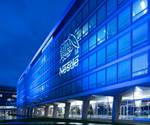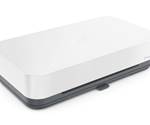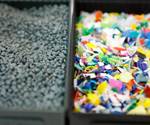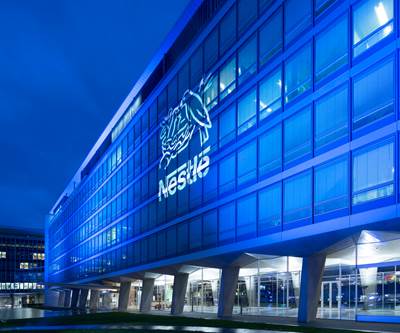Leading the Charge: Brand Owners Moving to Boost Recycled Content in Packages, Products
Leading brand owners and a big-box retailer discuss their recycling goals, which will impact processors and the entire supply chain.
Where do you see yourself in five years?
If you ask brand owners, the answer is that they plan to be using more recycled content in their packaging and products. Many consumer-goods companies and retailers have committed to increasing recycled content in their packaging to an average of 25% by 2025, compared with the current global average of just 2%, according to the Ellen MacArthur Foundation.
Because of these commitments, the year 2025 will be a significant one for both brand owners and the plastics industry as a whole.
It might seem like there is plenty of time to achieve that number before 2025. But with the U.S. recycling rate sitting at 8.4%, according to U.S. EPA statistics, there’s a lot that must happen to help get to that to 25%.
In order to meet those commitments, which are due in part to global pressure to cut down on plastic waste, brand owners are having to work now on this issue.
And they are. Plastics Technology spoke with PepsiCo, Nestlé, HP and Walmart to learn about ways they’re working to incorporate recycled content in their packaging and products. Spoiler alert: it’s going to take the entire supply chain, some creativity, lots of innovation and, of course, money.
PepsiCo Works to Increase Supply
Plastic bags might be the largest target for current environmental concerns, but PET bottles are not far behind. Beverage companies like PepsiCo are fully aware of this.
“Certainly, the plastics-in-environment crisis is offensive to us all,” says Kathleen Niesen, director of recycling and sustainability for PepsiCo Beverages North America. “We have come up with a vision that we really want to work toward where plastics never become waste. Plastics are so critical, not just for the delivery of our products, but for the lifestyles we have all developed relying on the material over the past several decades. We just want to see a world where those plastics don’t up in the environment.”

PepsiCo’s Lifewatr bottled water will be packaged in 100% rPET by the end of 2020.
PepsiCo committed to making 100% of its packaging recyclable, compostable, or biodegradable by 2025, and is striving to use 25% recycled plastic content in its plastic packaging by 2025. Additionally, PepsiCo aims to reduce 35% of virgin plastic use across its beverage portfolio.
Niesen says the company has incorporated recycled PET (rPET) in some of its packaging for over a decade and that PepsiCo is one of the largest users of food-grade recycled PET in the world. For instance, since 2009, PepsiCo’s Naked Juice brand has been making bottles with 100% rPET. The company’s Lifewtr brand is moving to 100% rPET by the end of this year.
“Plastics are so critical, not just for the delivery of our products, but for the lifestyles we have all developed relying on the material over the past several decades.”
“Different brands are accelerating in the recycled content space at different rates of speed, but all our product lines have the capability of using various percentage of recycled content as part of the packaging portfolio,” Niesen says.
While certain brands have already started to make the switch to rPET, PepsiCo still has many others that will need to adapt their packaging.
The company is working to help reliably increase the supply needed to meet its packaging goals, Niesen states. She says they see the need for state and local governments to make sure the infrastructure is up to speed to handle the collection and sortation for reprocessing the post-consumer material.
“There’s a misperception of the last decade or so that somehow recycling will pay for itself, but the value of material collection, sortation, reprocessing and reintroduction into the supply chain do not support that old paradigm that recycling is free,” she notes. “We do talk about the recycling costs and how we distribute the cost that is appropriate across the system.”
Last year, long-time competitors PepsiCo, Coca-Cola Co. and Keurig Dr Pepper all joined to launch of the Every Bottle Back initiative, a new effort to improve collection of plastic bottles so they can be made into new bottles.
One way the group is working to improve the quality and availability of recycled plastics in key regions of the country is by directing the equivalent of $400 million to The Recycling Partnership and Closed Loop Partners through a new $100 million industry fund that will be matched three-to-one by other grants and investors. The investments will be used to improve sorting, processing and collection in areas with the biggest infrastructure gaps to help increase the amount of recycled plastic available to be remade into beverage bottles.
“In North America,” Niesen warns, “[given] the recycle-content goals we have announced for ourselves as well as those announced by our major competitors … how the system is structured now, our demand will outstrip supply.”
She says the group is having in-depth discussions on how to work with new and innovative suppliers that could supercharge the supply the chain for recycled content and post-consumer plastics.
Nestlé Invests in Infrastructure
Nestlé is putting serious money toward recycling. The company announced this year that it will invest up to $2.1 billion to ensure a high adoption rate of food-grade recycled plastics and to accelerate development of innovative sustainable packaging solutions.
Building on its 2018 commitment to make 100% of its packaging recyclable or reusable by 2025, Nestlé will reduce its use of virgin plastics by one third in the same period.

Nestlé’s Poland Spring launched a line of bottles made with 100% food-grade recycled plastic in 2019.
Like PepsiCo, Nestlé has also used rPET in its packaging. The company plans for its Poland Spring bottled water to reach 100% recycled plastic across its entire still-water portfolio by 2022. Last year, the brand's 1-liter bottles began using 100% rPET.
Chastity McLeod, Nestlé head of technical packaging, said that the company’s ability to use recycled content directly links to the capacity of the recycling facilities to transform the reclaimed materials.
“We’re hoping for a greater demand from the industry; and by us purchasing the recycled material, we can help regenerate the funds for the MRFs and recycling facilities to invest in their infrastructure to help continue the loop,” McLeod said.
“Really, the $1.5 billion is about us creating the demand so we can pull those products in our portfolio,” she said. “It’s our goal to self-fund our work, and we believe part of the objective within our process is to make it more efficient.”
“We’re hoping for a greater demand from the industry; and by us purchasing the recycled material, we can help regenerate the funds for the MRFs and recycling facilities to invest in their infrastructure to help continue the loop.”
HP Talks Sourcing Material
HP plans to increase recycled plastics content across its print and personal systems portfolio to 30% by 2025.
Globally, HP has converted more than 199 million lb of recycled plastics into 3.9 billion HP Original ink and toner cartridges since 2000. Other products include HP Elite Dragonfly notebook PC, where over 82% of all mechanical parts are made of recycled materials, including its speaker enclosure, which is made with 50% PCR plastic and 5% ocean-bound plastics.

The HP Tango Terra printer is made with 30% recycled plastic and uses 48-73% recycled-content cartridges that include ocean-bound plastics.
Another example of increasing use of recycled plastics is the company’s HP Tango printer line, which now contains 30% closed-loop recycled plastics (reusing plastic from a previous printer to make a new printer), which a couple years ago was at 20%.
Ellen Jackowski, global head of sustainability strategy and innovation at HP, notes that the company is looking at moving away from virgin plastics to recycled content whenever possible. When they looked at different areas they could go for sourcing the material, they turned their sights on Haiti.
HP has been actively reducing ocean-bound plastics in Haiti since 2016, when the company began partnering with the First Mile Coalition to convert plastic bottles into recycled material used in Original HP ink cartridges. These efforts have diverted approximately 716,000 lb of plastics—or more than 25 million bottles— preventing this from reaching the waterways and oceans, and repurposed it into HP cartridges. Last year, HP announced a $2 million investment to expand its ocean-bound plastics supply chain.
“When we set a 30% target, we can't do it if the suppliers aren’t there to innovate—we need their help and we’re all in this together,” Jackowski notes. “Lots of discussions are being had on what needs to happen across the supply chain. Haiti is a example that can be used to scale elsewhere in similar collection models.”
Walmart Works with Suppliers
In 2016, Walmart announced its global goal to achieve 100% recyclable packaging for its private brands by 2025. The company is also targeting at least 20% PCR content in private-brand packaging by 2025.
Ashley Hall, Walmart’s director of strategic initiatives-corporate affairs, says the firm is working with its suppliers to use less plastic, recycle more, and support innovations to improve plastic waste reduction. The company’s Project Gigaton initiative invites suppliers to drive down waste by reducing unnecessary packaging, optimizing packaging materials, increasing the reuse and recycling of packaging. Walmart also asks its suppliers to help the company educate consumers on how to reduce, reuse and recycle plastics.
“One example of our work is that, for more than five years, Walmart U.S. has been working with Ecotech to divert plastic waste streams by using plastics from return centers to produce products for Walmart,” Hall says. “Ecotech helps us save around 4 million lb of plastic waste per year by turning items like Walmart’s bakery icing buckets and damaged plastics into new, usable products like dog bowls, Easter baskets and more.”
“In order to hit our recycled-content goals, we need to take a multi-faceted approach that looks to support infrastructure improvements while also working with others in the supply chain to reduce and recycle,” Hall adds. “Walmart is taking steps in each of these areas with strategic partners to prevent waste upstream and eliminate waste downstream.”
Related Content
Nova Chemicals Attains FDA Letter for Mechanically Recycled LLDPE
RLLDPE product will be marketed for applications including food packaging.
Read MoreWittmann Introduces Screenless Granulator for In-Line Recycling
S-Max primus is designed for efficiency and long life.
Read MoreKM Pipe Head Can Handle 100% PVC Recyclate
Three-layer pipe head from KraussMaffei can handle both postindustrial and postconsumer reclaim.
Read MoreNovel Line Turns Fluff to Blown Film
Processor Bioflex of Mexico is utilizing Reifenhäuser Blown Film’s EVO Fusion technology to integrate postindustrial and postconsumer recycled materials into products.
Read MoreRead Next
Nestlé Plans to Invest About $2 Billion on Recycled Plastic Packaging
To create a market, Nestlé is committed to sourcing up to 2 million metric tons of food-grade recycled plastics.
Read MoreHP Talks New Recycled Content Plastics Goal & Sustainability in 3D Printing
Nate Hurst, chief sustainable impact officer for HP, discusses the company’s goal to increase recycled content plastic to 30% by 2025 across its print and personal systems portfolio and also sustainable innovations in 3D printing.
Read MoreRecycling & Scrap Reclaim: Machinery Technology Advances as 'Circular Economy' Takes Hold
The circular economy and recycling were the top themes at K 2019, and machine builders responded with new systems to improve equipment performance and material quality.
Read More





























